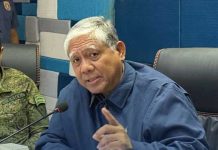ILOILO City – The rainy season has started, according to the Philippine Atmospheric, Geophysical and Astronomical Services Administration (Pagasa).
Scattered to at times widespread rainfall associated with the southwest monsoon these past few days were observed by Pagasa stations in the western section of the country. These confirmed the onset of the rainy season, said Pagasa administrator Dr. Vicente B. Malano.
Western sections of Luzon and Visayas would continue to experience rains, said Malano, but there could also be breaks in rainfall for days or even weeks.
“Rainfall conditions for July are expected to be generally near to above normal over most parts of Luzon and the Visayas, while generally below normal in most areas of Mindanao and southern Visayas,” read part of the Pagasa advisory signed by Malano.
But despite the onset of the rainy season, Pagasa said the mild El Niño being experienced since the last quarter of 2018 would likely persist until August.
Still, it advised the public and all concerned government agencies to take precautionary measures against the adverse impacts of the rainy season.
In Pagasa’s climate outlook, the estimated number of tropical cyclones to enter the country from June to November would be: one or two in June, two or three in July, two or three in August, two to four in September, two or three in October, and one or two in November.
The estimated number of tropical cyclones for December would be included in the next climate outlook to be issued, according to Pagasa.
From January to May this year, the country experienced three tropical cyclones (“Amang” in January, “Betty” in February and “Chedeng” in March).
The Philippines experiences an average of 20 tropical cyclones in a year. Pagasa, however, said there may be fewer tropical cyclones this year due to El Niño./PN





